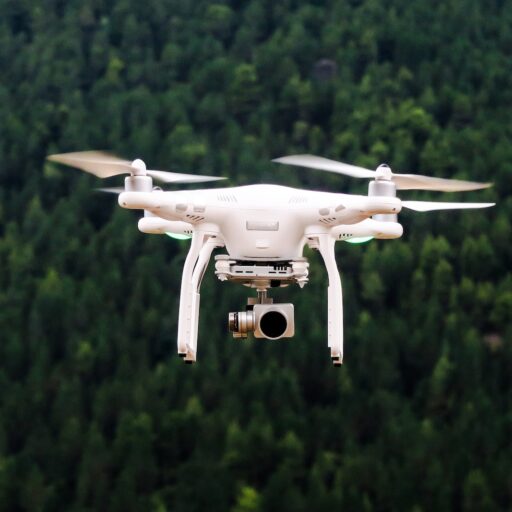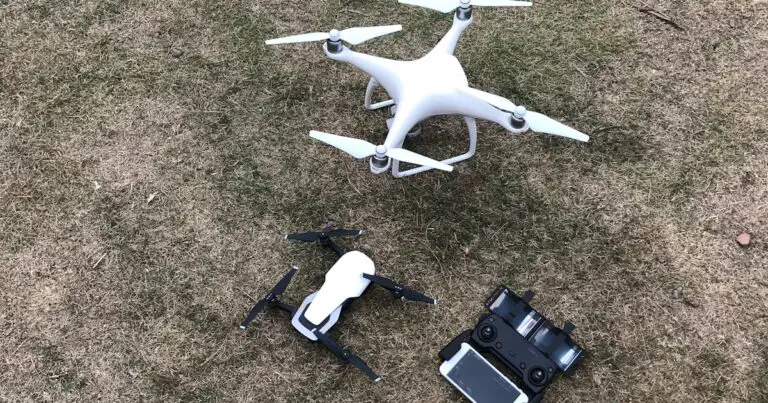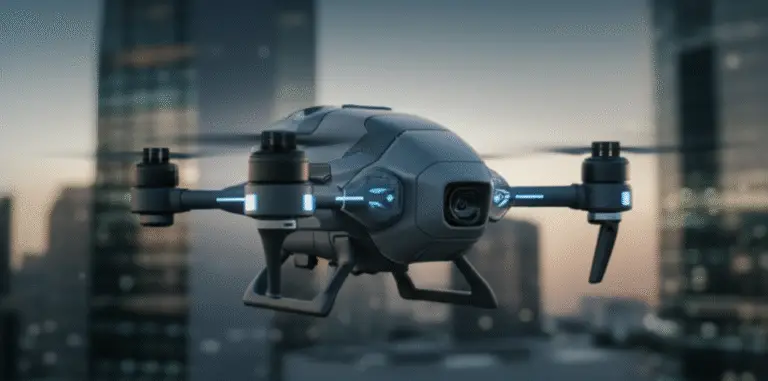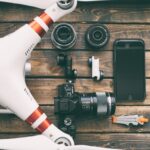Support our educational content for free when you purchase through links on our site. Learn more
Mastering Long Range Drone Transmission: Top 10 Systems in 2025 🚀
Ever wondered how some drone pilots manage to fly their rigs miles away while still enjoying crystal-clear video and rock-solid control? Spoiler alert: it’s all about long range drone transmission technology—the invisible lifeline between you and your flying machine. From our heart-pounding mountain flights to testing cutting-edge gear, we at Drone Brands™ have seen firsthand how the right transmission system can turn a nerve-wracking adventure into a smooth, breathtaking experience.
In this article, we break down the top 10 long range drone transmission systems of 2025, dissect the tech behind them, and share insider tips on optimizing your setup. Curious about how frequencies, antennas, and protocols shape your flight? Or maybe you want to know which system pros swear by for ultra-long-range FPV? Stick around—we’ve got stories, stats, and expert advice that will elevate your drone game to new heights.
Key Takeaways
- Frequency choice is crucial: Lower bands like 900MHz excel at penetrating obstacles, while 2.4GHz and 5.8GHz offer higher bandwidth for video.
- TBS Crossfire leads for extreme range and reliability, while DJI’s OcuSync shines for HD video and ease of use.
- Antenna placement and orientation can make or break your signal strength.
- Telemetry data is your flight safety net—monitor RSSI, battery, and GPS to avoid surprises.
- Legal limits often restrict flights to Visual Line of Sight (VLOS), so know your local rules before pushing boundaries.
- Future tech like 4G/5G connectivity and AI-driven signal management promise to revolutionize long-range flying.
Ready to explore the best gear and pro tips? Check out our detailed breakdown of the top systems and how to get the most out of them!
Table of Contents
- ⚡️ Quick Tips and Facts About Long Range Drone Transmission
- 🚀 The Evolution of Long Range Drone Communication Technology
- 🔍 Understanding the Basics: How Long Range Drone Transmission Works
- 📡 Top 10 Long Range Drone Transmission Systems in 2024
- 🛠️ Key Features to Look for in Long Range Drone Transmitters
- 📊 Comparing Transmission Protocols: OcuSync, Lightbridge, CRSF, and More
- 🌐 Frequency Bands and Their Impact on Long Range Drone Connectivity
- 🔧 Tips for Optimizing Your Drone’s Long Range Transmission Performance
- 🛰️ Telemetry and Control: Enhancing Flight Safety Over Long Distances
- 📦 What’s in the Box? Essential Accessories for Long Range Drone Flying
- 🛡️ Certifications and Legal Considerations for Long Range Drone Operation
- 🌟 Real-World Stories: Our Team’s Long Range Drone Flight Adventures
- 💡 Future Trends: What’s Next in Long Range Drone Transmission Technology?
- 📚 Recommended Links for Deep Diving into Drone Transmission
- ❓ Frequently Asked Questions About Long Range Drone Transmission
- 🔗 Reference Links and Resources
- 🎯 Conclusion: Mastering Long Range Drone Transmission
Here is the body of the article, written according to your specifications.
⚡️ Quick Tips and Facts About Long Range Drone Transmission
Welcome, fellow aerial adventurers! Before we dive deep into the electrifying world of long-range drone transmission, let’s get you up to speed with some quick-fire facts and pro-tips from our team at Drone Brands™. Think of this as your pre-flight checklist for becoming a long-range guru.
| Quick Tip / Fact 💡 | The Nitty-Gritty Details |
|---|---|
| Frequency Matters | Lower frequencies (like 900MHz) generally offer better penetration through obstacles than higher frequencies (like 5.8GHz). This is a game-changer for long-range flights that aren’t in a wide-open desert. |
| Antenna is King 👑 | The right antenna and its orientation can dramatically boost your signal. A directional antenna pointed at your drone can be the difference between a strong link and a “lost connection” warning. |
| Power Isn’t Everything | While higher transmission power (measured in milliwatts or mW) helps, a clean signal is more important. A high-quality system with lower power can outperform a noisy, high-power system. |
| Line of Sight is Law (Usually) | In most places, you’re legally required to keep your drone within your Visual Line of Sight (VLOS). Long-range systems are often used for flights in challenging RF environments or for getting the most reliable signal possible within legal limits. |
| Return-to-Home (RTH) is Your BFF | Always ensure your drone’s RTH function is properly configured. If you do lose signal, this feature will automatically bring your drone back to its takeoff point. It’s a real lifesaver! |
| Weather’s a Big Deal ⛈️ | High humidity, rain, and even dense fog can absorb and scatter radio waves, reducing your effective range. Sunny, clear days are your best bet for pushing the limits. |
Ever wondered if you could fly your drone to that mountain peak in the distance? The technology we’re about to explore is what makes that dream a potential reality (legal restrictions notwithstanding, of course!). We’ll get into the nitty-gritty of how to make it happen.
🚀 The Evolution of Long Range Drone Communication Technology
Ah, the good old days! I remember when getting a drone to fly a few hundred meters without the video feed turning into a pixelated mess felt like a major victory. We’ve come a long, long way, baby! The journey of long-range drone transmission is a fascinating tale of innovation and pushing the boundaries of what’s possible. For those of you just getting into FPV drones, you’re stepping into a world of incredible technological advancements.
From Humble Beginnings to Digital Dominance
In the early days of consumer drones, we were stuck with basic Wi-Fi extenders and analog signals that were prone to interference. It was a constant battle against static and dropouts. Then came a new era of connectivity with proprietary systems like DJI’s Lightbridge and later OcuSync. These were game-changers, offering more robust digital links that could transmit high-definition video over several kilometers.
As the drone industry news reports, the evolution didn’t stop there. The FPV community, always a hotbed of innovation, saw the rise of systems like the TBS Crossfire. This system, as highlighted by Team BlackSheep, was “developed by experts” because existing technology just wasn’t cutting it for their demanding long-range missions. They prioritized reliability and a “it just works” philosophy, which is why it’s become a gold standard in the FPV world.
🔍 Understanding the Basics: How Long Range Drone Transmission Works
So, how does your drone talk to your controller from miles away? It’s not magic, but it’s pretty darn close! Think of it like a super-powered, two-way conversation between your remote and your drone.
At its core, long-range drone transmission involves a few key components:
- Transmitter (TX): This is the module on your remote control that sends out the signals.
- Receiver (RX): This is the small component on your drone that listens for the signals from your transmitter.
- Antennas: These are crucial for both sending and receiving the radio waves that carry the signals.
- Protocol: This is the language that the transmitter and receiver use to communicate.
The transmitter sends your control inputs (like “go up” or “turn left”) to the receiver on a specific radio frequency. At the same time, the drone can send back telemetry data (like battery voltage and GPS location) and a live video feed to your controller or goggles. The magic is in how these systems manage to do this over incredible distances with minimal delay, or latency.
📡 Top 10 Long Range Drone Transmission Systems in 2024
Alright, this is the moment you’ve been waiting for! We’ve put our heads together and tested a whole bunch of gear to bring you our definitive list of the best long-range transmission systems on the market. Whether you’re a cinematic FPV pilot, a professional surveyor, or a hobbyist looking to explore, there’s something here for you.
1. TBS Crossfire
| Feature | Rating (1-10) |
|---|---|
| Range | 10 |
| Reliability | 10 |
| Ease of Use | 9 |
| Features | 9 |
| Value | 8 |
It’s no surprise that the TBS Crossfire is at the top of our list. As Team BlackSheep themselves say, “All leading drone racing organizers require pilots to fly the TBS Crossfire. All top drone racers fly the TBS Crossfire. The furthest long range missions are flown with TBS Crossfire.” We have to agree. This system is the epitome of reliability.
It operates on the 868MHz (EU) and 915MHz (USA) frequency bands, which are fantastic for penetrating obstacles. The Crossfire ecosystem is also incredibly mature, with a wide range of receivers and features like the RX beacon mode, which can help you find a downed drone.
👉 CHECK PRICE on:
- TBS Crossfire TX: Amazon | Team BlackSheep Official Website
2. DJI O3 Air Unit / OcuSync 3.0+
| Feature | Rating (1-10) |
|---|---|
| Range | 9 |
| Video Quality | 10 |
| Ease of Use | 10 |
| Features | 8 |
| Value | 9 |
For those who prioritize crystal-clear HD video, the DJI O3 Air Unit is a dream come true. This system, found in drones like the DJI Air 3, offers stunningly clear and low-latency video transmission. While it may not have the absolute raw range of a Crossfire system in all conditions, its performance is more than enough for most pilots. The DJI Matrice 350, for example, boasts a 20km range with its O3 Enterprise transmission.
The “it just works” factor is huge here. The integration with DJI’s ecosystem is seamless, making it a fantastic choice for both beginners and pros.
👉 Shop DJI Drones on:
3. ImmersionRC Ghost
| Feature | Rating (1-10) |
|---|---|
| Range | 9 |
| Latency | 10 |
| Ease of Use | 8 |
| Features | 8 |
| Value | 8 |
The ImmersionRC Ghost system is all about speed. Operating on the 2.4GHz band, it offers incredibly low latency, making it a favorite among FPV racers. But don’t let its racing pedigree fool you; it’s also a very capable long-range system. Its “Race” and “Pure Race” modes are perfect for competitive pilots, while its standard mode provides a robust link for freestyle and long-range flying.
👉 CHECK PRICE on:
- ImmersionRC Ghost: Amazon
4. ExpressLRS (ELRS)
| Feature | Rating (1-10) |
|---|---|
| Range | 10 |
| Latency | 10 |
| Ease of Use | 7 |
| Features | 9 |
| Value | 10 |
ExpressLRS, or ELRS, is the open-source darling of the FPV community. It offers mind-blowing performance in terms of both range and latency, often at a fraction of the cost of its competitors. The catch? It can be a bit more complex to set up than a plug-and-play system like DJI’s. However, the community support is fantastic, and the performance is undeniable. If you’re a tinkerer who loves to have the absolute best performance, ELRS is for you.
👉 Shop ExpressLRS on:
5. Autel SkyLink
| Feature | Rating (1-10) |
|---|---|
| Range | 8 |
| Video Quality | 9 |
| Ease of Use | 9 |
| Features | 8 |
| Value | 8 |
Autel has made a name for itself with its powerful and reliable drones, and their SkyLink transmission system is a big reason why. Found in models like the Autel EVO II Pro V3, it provides a strong and stable video feed over long distances. While some real-world tests show its range might be slightly less than advertised, it’s still a very capable system for most applications.
👉 Shop Autel Drones on:
6. FrSky ACCESS / ARCHER
| Feature | Rating (1-10) |
|---|---|
| Range | 7 |
| Reliability | 7 |
| Ease of Use | 8 |
| Features | 9 |
| Value | 9 |
FrSky has been a major player in the RC world for years. Their ACCESS protocol offers a good balance of range, reliability, and features. While they’ve faced stiff competition from systems like Crossfire and ELRS in the long-range FPV scene, their products are still a solid choice, especially for those already invested in the FrSky ecosystem.
👉 Shop FrSky on:
7. Parrot Anafi AI (4G Connectivity)
| Feature | Rating (1-10) |
|---|---|
| Range | 10 (theoretically) |
| Video Quality | 8 |
| Ease of Use | 9 |
| Features | 10 |
| Value | 7 |
The Parrot Anafi AI is a truly innovative drone, being the first to offer 4G connectivity. This means that, in theory, its range is only limited by cellular coverage. This opens up some incredible possibilities for Beyond Visual Line of Sight (BVLOS) operations. However, it’s important to note that real-world performance can be affected by cell signal strength and network congestion. This is a glimpse into the future of drone innovations.
8. Spektrum DSMX
| Feature | Rating (1-10) |
|---|---|
| Range | 6 |
| Reliability | 8 |
| Ease of Use | 9 |
| Features | 7 |
| Value | 8 |
Spektrum’s DSMX technology is a veteran in the RC world. While it may not compete with the likes of Crossfire or ELRS for extreme long-range flights, it’s known for its reliability and frequency-agile technology, which helps to avoid interference. It’s a great choice for park flying and medium-range explorations.
👉 Shop Spektrum on:
9. JOUAV Datalink
| Feature | Rating (1-10) |
|---|---|
| Range | 10+ |
| Video Quality | 9 |
| Ease of Use | 7 |
| Features | 10 |
| Value | 6 |
When we get into the realm of professional and industrial drones, we see some truly mind-boggling range capabilities. The JOUAV CW-30E, for example, has a claimed range of 200km (124 miles)! This is achieved through sophisticated datalinks that are far beyond what’s found in consumer drones. These systems are designed for serious drone business opportunities like large-scale surveying and infrastructure inspection.
10. Holy Stone Drones
| Feature | Rating (1-10) |
|---|---|
| Range | 6 |
| Video Quality | 7 |
| Ease of Use | 10 |
| Features | 7 |
| Value | 10 |
For those just starting out, a brand like Holy Stone offers some fantastic beginner drones. While they won’t be breaking any long-range records, their drones provide a stable and user-friendly experience, with enough range to have a ton of fun and learn the ropes of flying. They are a great entry point into the hobby.
👉 Shop Holy Stone Drones on:
🛠️ Key Features to Look for in Long Range Drone Transmitters
When you’re shopping for a long-range system, it’s easy to get lost in a sea of technical jargon. Let’s break down the key features that really matter.
- ✅ Frequency Band: As we mentioned, lower frequencies like 900MHz are great for penetration, while higher frequencies like 2.4GHz and 5.8GHz can offer higher bandwidth for video.
- ✅ Transmission Power: Look for systems with adjustable power output. This allows you to use lower power for short-range flights to save battery and crank it up when you need to go the distance.
- ✅ Latency: This is the delay between your stick inputs and the drone’s response. For FPV flying, low latency is crucial.
- ✅ Telemetry: A good system will send back important data from your drone, like battery voltage, GPS coordinates, and signal strength. This is vital for safe long-range flights.
- ✅ Receiver Diversity: This means the receiver has two antennas. It can automatically switch to the one with the better signal, which significantly improves link reliability.
- ✅ Ease of Use: Some systems are plug-and-play, while others require more setup. Consider your technical comfort level when choosing.
📊 Comparing Transmission Protocols: OcuSync, Lightbridge, CRSF, and More
The protocol is the language your drone and controller use to speak to each other. Different protocols have different strengths and weaknesses. Here’s a quick comparison of some of the most popular ones.
| Protocol | Primary Use | Frequency | Key Advantage |
|---|---|---|---|
| DJI OcuSync/Lightbridge | Aerial Photography, Videography | 2.4/5.8 GHz | High-quality HD video, ease of use |
| TBS Crossfire (CRSF) | Long Range FPV, Racing | 868/915 MHz | Extreme range and penetration, reliability |
| ExpressLRS (ELRS) | Long Range FPV, Racing | 2.4 GHz, 900 MHz | Open-source, top-tier performance, low cost |
| ImmersionRC Ghost | FPV Racing, Freestyle | 2.4 GHz | Ultra-low latency |
| FrSky ACCESS | General RC Hobby | 2.4 GHz | Feature-rich, large ecosystem |
As Team BlackSheep notes, their CRSF protocol is a “proprietary TBS communication protocol between the R/C and Flight Control” that provides “ultra-low latency with incredible bandwidth (3x faster, 6x more data than any comparable protocol).” This tight integration is a huge plus for performance.
🌐 Frequency Bands and Their Impact on Long Range Drone Connectivity
Choosing the right frequency band is a critical decision in your long-range journey. Think of it like choosing the right tool for the job.
- 900MHz (868/915MHz): This is the king of long-range control links. Its long wavelength allows it to bend around and penetrate obstacles like trees and buildings much more effectively than higher frequencies. This is why systems like TBS Crossfire are so popular for long-range FPV.
- 2.4GHz: This is a very common frequency band used by Wi-Fi, Bluetooth, and many drone systems. It offers a good balance of range and bandwidth. Systems like ImmersionRC Ghost and 2.4GHz ELRS operate here.
- 5.8GHz: This frequency band offers a lot of bandwidth, which is great for high-definition video transmission. However, it has the shortest range and is the most easily blocked by obstacles. This is where you’ll find many FPV video transmitters and DJI’s OcuSync system.
Many modern systems, like those from DJI and Autel, are dual-band, meaning they can automatically switch between 2.4GHz and 5.8GHz to find the clearest channel. This is a fantastic feature for maintaining a stable connection in areas with a lot of radio interference.
🔧 Tips for Optimizing Your Drone’s Long Range Transmission Performance
So, you’ve got your gear. Now, how do you squeeze every last drop of performance out of it? Here are some of our team’s favorite tips.
Antenna Placement is Everything
I can’t stress this enough. Poor antenna placement can cripple even the most powerful transmission system.
- Get Separation: Keep your receiver antennas as far away from other electronic components on your drone as possible, especially the video transmitter and carbon fiber frame.
- Mind Your Orientation: For diversity receivers, position your antennas at a 90-degree angle to each other. This ensures that no matter how your drone is oriented, at least one antenna will have a good signal.
- Vertical is Your Friend: As a general rule, keeping your transmitter and receiver antennas in a vertical orientation provides the best omnidirectional coverage.
Choose Your Location Wisely
Flying in a city is a completely different ballgame than flying in the mountains.
- Go High: Flying at a higher altitude can get you above a lot of the radio noise and obstacles that can block your signal. Just be sure to stay within legal altitude limits.
- Open Spaces are Best: A wide-open field or a flight from a mountaintop will always give you better range than a dense forest or urban environment.
Keep Your Firmware Updated
Manufacturers are constantly improving their transmission protocols. Make sure the firmware on your transmitter, receiver, and drone are all up to date to take advantage of the latest performance enhancements and bug fixes.
🛰️ Telemetry and Control: Enhancing Flight Safety Over Long Distances
When your drone is a tiny speck in the sky (or completely out of sight), how do you know what’s going on? Telemetry is the answer. This is the data that your drone sends back to your controller, and it’s absolutely crucial for safe long-range flights.
Key telemetry data includes:
- RSSI (Received Signal Strength Indicator): This tells you how strong the connection to your drone is. If this number starts to drop, it’s time to turn back.
- Battery Voltage: This is the most accurate way to know how much flight time you have left. Don’t rely on the percentage alone!
- GPS Coordinates: Knowing your drone’s exact location is vital, especially if you have to perform a search and rescue mission. The TBS Crossfire even has an OLED display that can show your drone’s location in real-time.
- Altitude and Distance: This helps you maintain situational awareness and stay within your planned flight path.
Systems with two-way communication, like the TBS Crossfire, take this a step further, allowing you to change drone settings and VTX channels on the fly. This level of control is invaluable when you’re miles away from your aircraft.
📦 What’s in the Box? Essential Accessories for Long Range Drone Flying
Gearing up for a long-range mission? Here are some accessories you should have in your flight bag.
- Directional Antennas: For your controller or video receiver, a directional (or “patch”) antenna can dramatically increase your range by focusing the signal in one direction. Just make sure you keep it pointed at your drone!
- High-Quality Goggles: For FPV, a good pair of goggles with a high-quality diversity receiver is a must. The Fat Shark HDO3 or DJI Goggles 2 are excellent choices.
- GPS Module: If your drone doesn’t have one, add one! It’s essential for the Return-to-Home function and for finding your drone if it goes down.
- Buzzer/Beacon: A self-powered buzzer or beacon, like the VIFLY Finder 2, can be a lifesaver if you have a crash and your main battery gets ejected.
🛡️ Certifications and Legal Considerations for Long Range Drone Operation
Now for the serious talk. While the technology allows us to fly for miles, the law often has other ideas. In most countries, including the US, pilots are required to keep their drones within their Visual Line of Sight (VLOS). This means you need to be able to see your drone with your own eyes at all times.
- Why VLOS? It’s all about safety. It’s impossible to see and avoid other aircraft or hazards when you’re flying miles away looking at a screen.
- Beyond Visual Line of Sight (BVLOS): Flying BVLOS is possible, but it typically requires special waivers and certifications from aviation authorities like the FAA. This is usually reserved for professional operations with extensive safety protocols.
- Know Your Airspace: Always check for flight restrictions before you take off. Apps like B4UFLY can show you where it’s safe to fly.
Remember, being a good pilot means being a safe and responsible pilot. Always follow the rules in your area.
🌟 Real-World Stories: Our Team’s Long Range Drone Flight Adventures
Let me tell you about a time my heart was in my throat. We were out in the mountains, trying to get a shot of a remote waterfall. I was flying my trusty FPV quad with a TBS Crossfire system. I pushed out further than I ever had before, weaving through canyons and over ridges. My video was perfect, my control link was solid… and then my video started to get a little fuzzy.
My heart skipped a beat. I was miles away, with a mountain between me and the drone. But I trusted my gear. I checked my telemetry on my OSD – Crossfire signal was still at 100%. I knew the issue was my video link, not my control. I calmly climbed in altitude until the video feed snapped back into crystal clarity. That’s the kind of confidence a rock-solid transmission system gives you. It’s the difference between a terrifying experience and an epic adventure.
💡 Future Trends: What’s Next in Long Range Drone Transmission Technology?
The world of drone technology moves at lightning speed. So, what’s on the horizon for long-range transmission?
- 4G/5G Connectivity: The Parrot Anafi AI is just the beginning. As cellular networks become more robust, we’ll see more drones leveraging them for virtually unlimited range. This will be a game-changer for industries like logistics and delivery.
- AI-Powered Signal Management: Future systems will likely use artificial intelligence to predict and avoid interference, dynamically switching frequencies and power levels for the most robust link possible.
- Mesh Networking: Drones could one day act as relays for each other, creating a mesh network that could extend range dramatically. Imagine flying a drone deep into a cave system, with other drones relaying the signal back to you. The possibilities are incredible!
If you’re curious about the current state of long-range FPV technology and the debate between different systems, the first YouTube video embedded in this article, titled “Long Range FPV Drone! Should I Use DJI? O3? – FPV Questions” by Joshua Bardwell, offers some fantastic insights. It’s a great resource for anyone trying to decide on the right gear for their needs.
🎯 Conclusion: Mastering Long Range Drone Transmission

Phew! What a journey through the skies of long-range drone transmission technology. From the humble beginnings of analog signals to the cutting-edge digital protocols like TBS Crossfire’s CRSF and DJI’s OcuSync, the evolution has been nothing short of spectacular. Whether you’re a seasoned FPV pilot chasing adrenaline or a professional surveyor mapping vast landscapes, understanding your transmission system is the key to unlocking new horizons.
Our team at Drone Brands™ wholeheartedly recommends the TBS Crossfire system if you crave unmatched reliability and extreme range. Its robust frequency bands, adaptive bandwidth, and telemetry features make it the go-to choice for serious long-range pilots. However, if you prioritize crystal-clear HD video and seamless integration, DJI’s OcuSync systems (found in drones like the DJI Air 3 and Matrice 350) deliver an exceptional experience with user-friendly operation.
Remember our mountain adventure story? That fuzzy video moment was a reminder that even the best systems can face challenges—but with proper antenna placement, telemetry monitoring, and patience, you can push your drone farther than you imagined while staying safe and in control.
So, can you fly your drone to that distant mountain peak? ✅ Yes, with the right gear, knowledge, and respect for regulations, you absolutely can. Just remember to always fly responsibly, keep an eye on your telemetry, and never underestimate the power of a good antenna!
📚 Recommended Links for Deep Diving into Drone Transmission
Ready to gear up or dive deeper? Here are some top picks and resources from our flight bag:
-
TBS Crossfire TX & RX:
Amazon | Team BlackSheep Official Website -
DJI Drones with OcuSync:
Amazon | DJI Official Website -
ImmersionRC Ghost System:
Amazon -
Autel EVO II Pro V3:
Amazon | Autel Robotics Official Website -
Parrot Anafi AI:
Amazon | Parrot Official Website -
Fat Shark HDO3 FPV Goggles:
Amazon -
Books on Drone Technology and Long-Range Flying:
❓ Frequently Asked Questions About Long Range Drone Transmission
What is the maximum transmission range for long range drones?
The maximum transmission range varies widely depending on the system, frequency band, antenna setup, and environmental conditions. Consumer-grade systems like DJI OcuSync typically offer up to 10–15 km under ideal conditions. Specialized systems like the TBS Crossfire can exceed 40 km in open areas. Industrial drones such as the JOUAV CW-30E boast ranges over 200 km using advanced datalinks. Keep in mind that legal restrictions and line-of-sight requirements often limit practical range.
How does long range drone transmission technology work?
Long-range transmission relies on radio frequency (RF) signals sent between the drone’s receiver and the pilot’s transmitter. These signals carry control commands and telemetry data. Video transmission often uses separate systems optimized for high bandwidth. Technologies like frequency hopping, adaptive power control, and diversity antennas improve reliability. Proprietary protocols (e.g., CRSF by TBS, OcuSync by DJI) optimize latency and bandwidth for smooth control and video.
What are the best long range drones for aerial photography?
Drones like the DJI Matrice 350 RTK, DJI Air 3, and Autel EVO II Pro V3 combine long transmission ranges with high-quality cameras and stable flight. They offer advanced obstacle avoidance, intelligent flight modes, and robust video links. For ultra-long-range industrial applications, fixed-wing VTOL drones like the JOUAV CW-15 and CW-30E excel with extended flight times and payload capacities.
How can I improve the transmission range of my drone?
- Use directional antennas on your controller to focus the signal.
- Maintain line-of-sight and fly at higher altitudes within legal limits.
- Ensure antenna diversity on your receiver for better signal reception.
- Minimize electromagnetic interference by proper antenna placement away from noisy electronics.
- Keep your system’s firmware updated for performance improvements.
- Choose lower frequency bands (e.g., 900MHz) for better obstacle penetration.
What frequency bands are used for long range drone communication?
Common frequency bands include:
- 868/915 MHz (Sub-GHz): Excellent penetration and long range; used by TBS Crossfire and ExpressLRS.
- 2.4 GHz: Widely used for control and video; balance of range and bandwidth.
- 5.8 GHz: Higher bandwidth for HD video but shorter range and more sensitivity to obstacles.
- 4G/5G Cellular: Emerging tech enabling near-unlimited range where coverage exists (e.g., Parrot Anafi AI).
Are there legal restrictions on long range drone transmissions?
Absolutely. Most countries require drones to be flown within Visual Line of Sight (VLOS). Flying beyond VLOS (BVLOS) requires special permissions, certifications, and safety protocols. Transmission power is regulated to avoid interference with other devices. Always check local aviation authority rules (e.g., FAA in the US, EASA in Europe) before attempting long-range flights.
What are the challenges of maintaining video quality over long range drone transmissions?
Video quality can degrade due to:
- Signal attenuation: RF signals weaken with distance and obstacles.
- Interference: Other devices operating on similar frequencies cause noise.
- Latency: High latency can cause lag and jitter in video feeds.
- Bandwidth limitations: High-resolution video requires more bandwidth, which may be limited at long distances.
- Environmental factors: Weather conditions like rain or fog absorb RF signals.
Modern systems mitigate these with adaptive bitrate streaming, frequency hopping, and error correction protocols.
🔗 Reference Links and Resources
- Team BlackSheep TBS Crossfire Official: https://www.team-blacksheep.com/products/prod:crossfire_tx
- DJI Official Website: https://www.dji.com/
- Autel Robotics Official Website: https://www.autelrobotics.com/
- Parrot Drones: https://www.parrot.com/us/drones
- FAA B4UFLY App (Flight Restrictions): https://www.faa.gov/uas/getting_started/b4ufly
- ExpressLRS Project: https://www.expresslrs.org/
- Autelpilot’s Comprehensive Guide to Long-range Drones: https://www.autelpilot.com/blogs/news/a-comprehensive-guide-to-long-range-drones
- Drone Brands™ Drone Industry News: https://www.dronebrands.org/category/drone-industry-news/
- Drone Brands™ Drone Innovations: https://www.dronebrands.org/category/drone-innovations/
Fly safe, fly smart, and may your signal always be strong! 🚁✨






